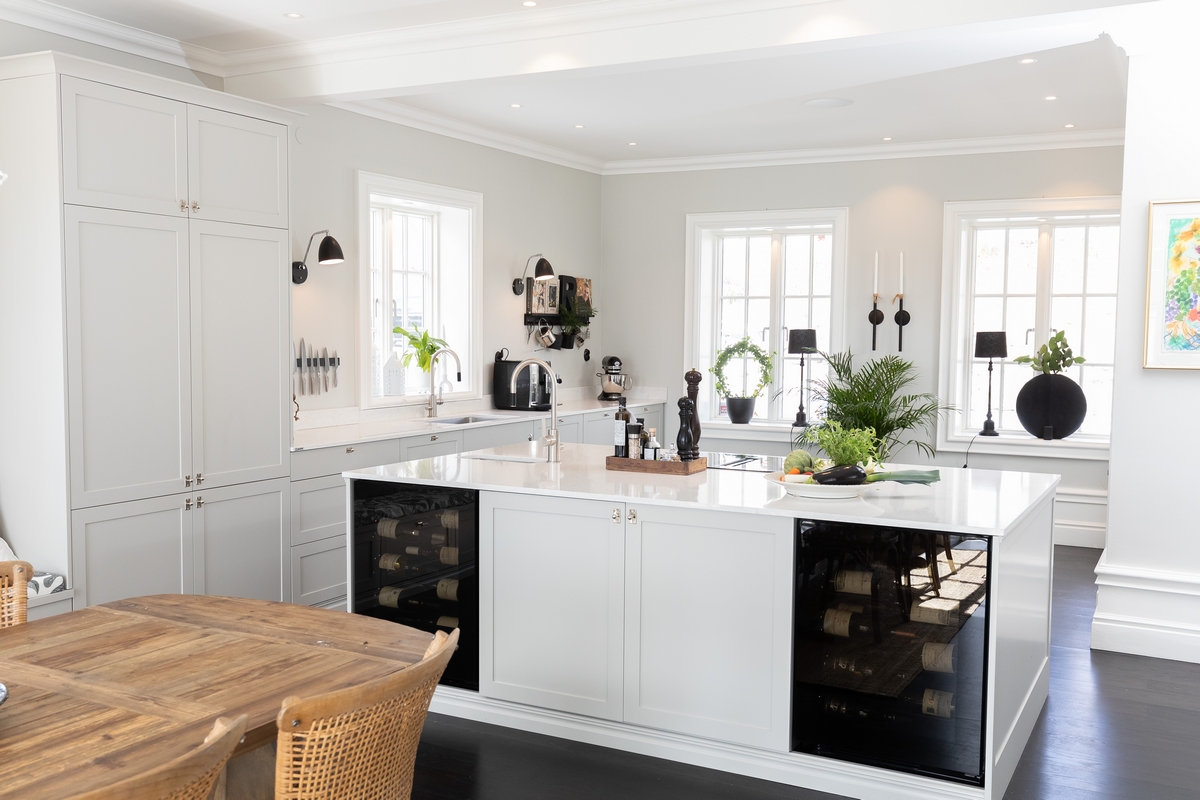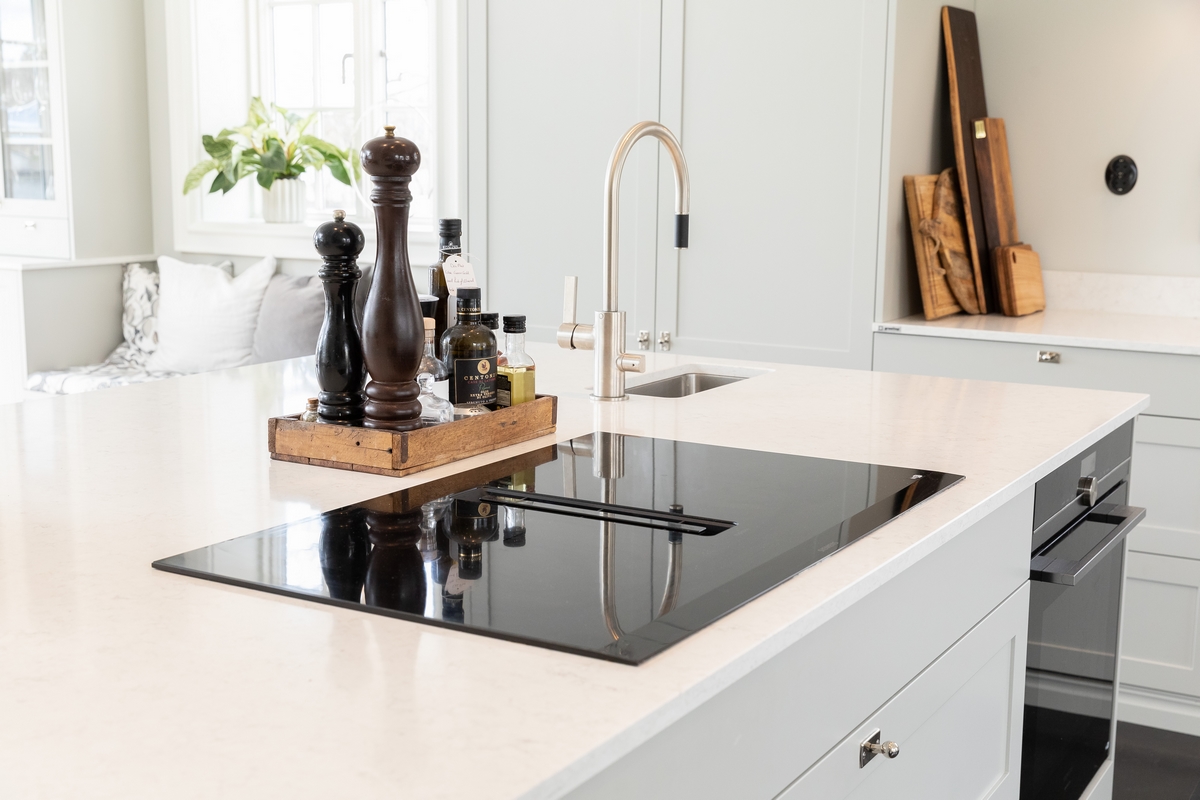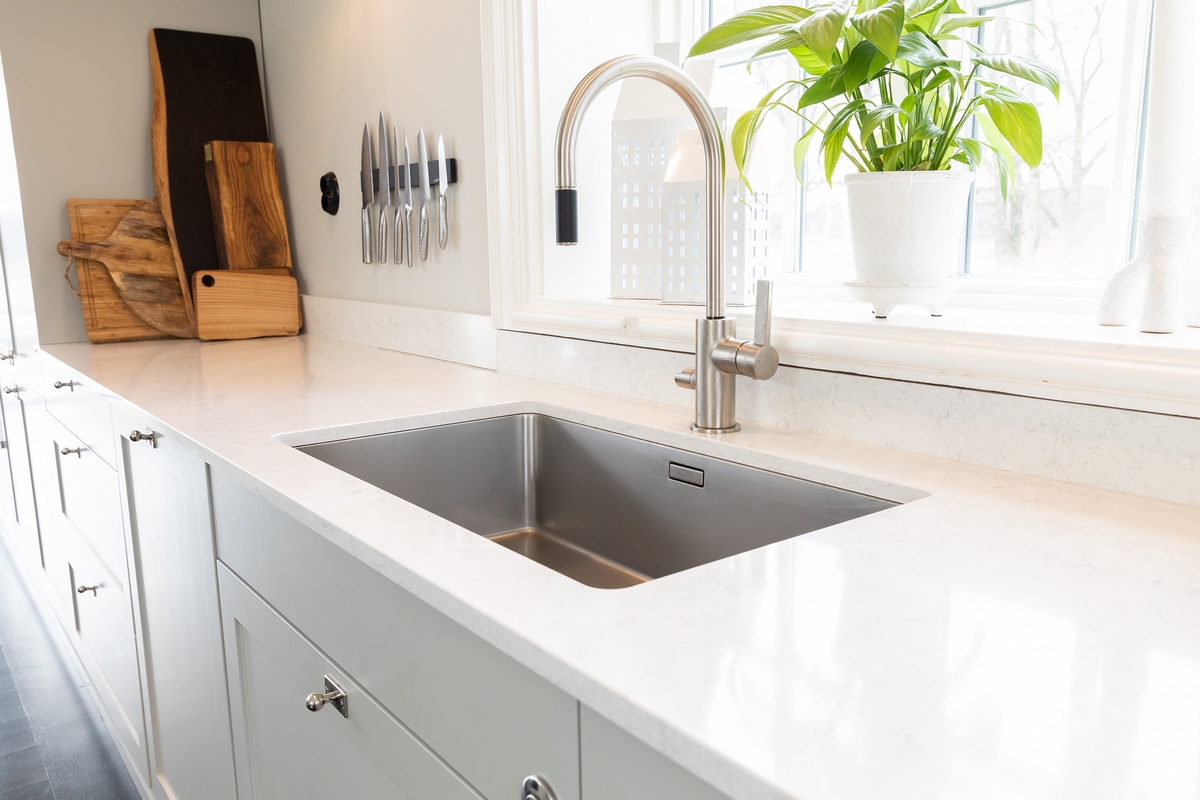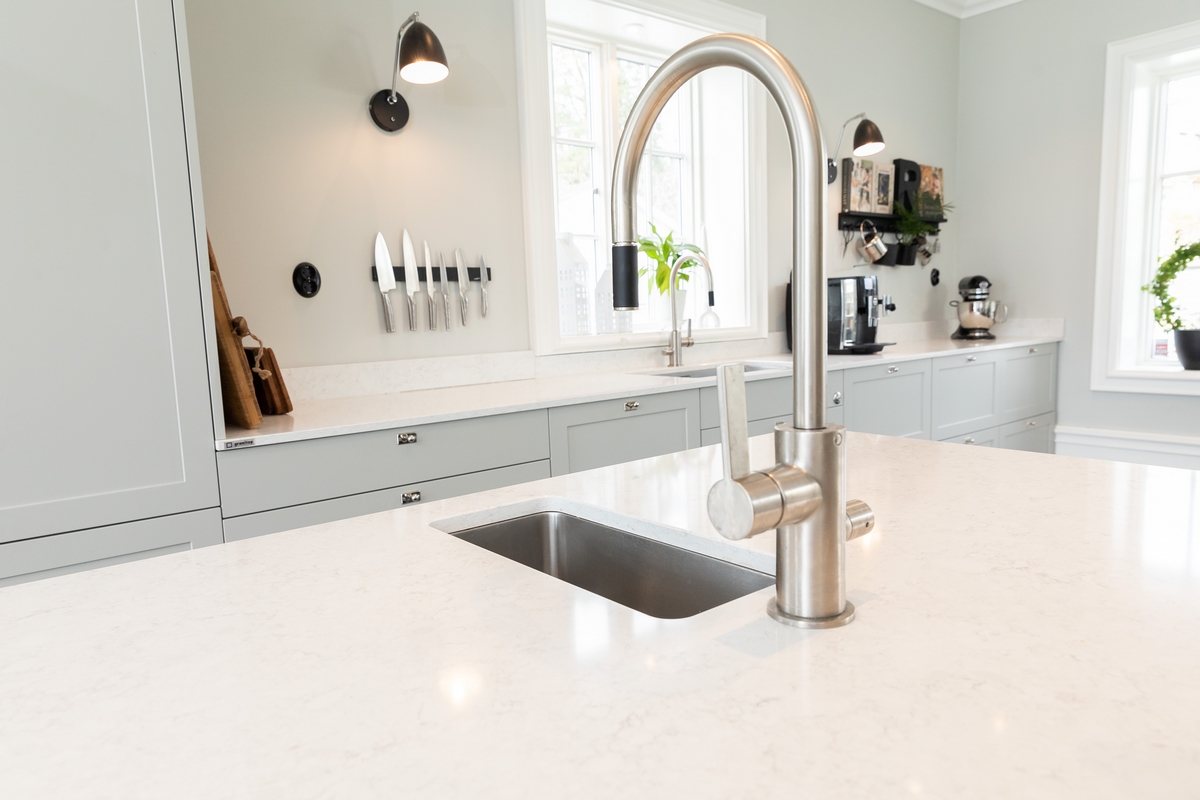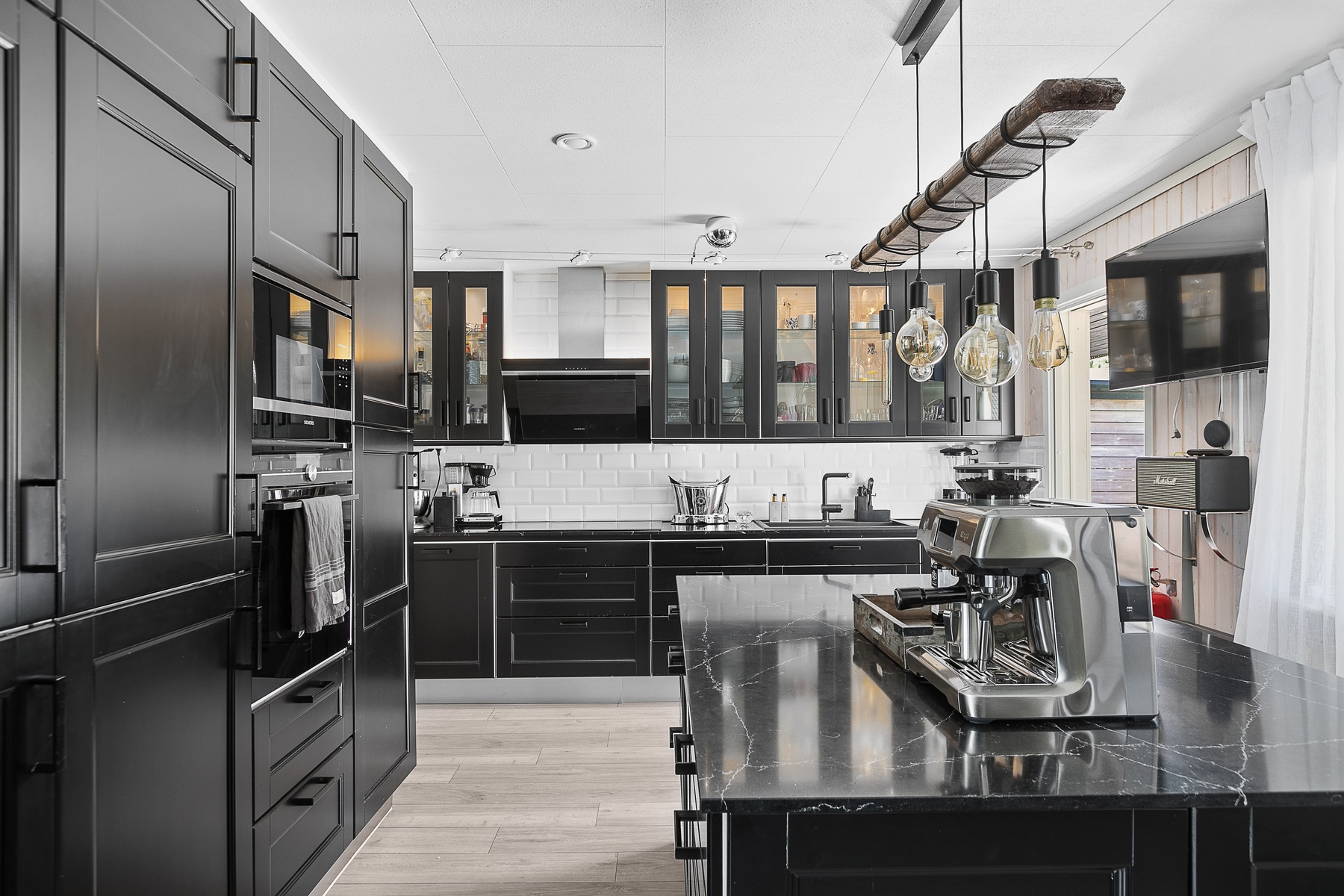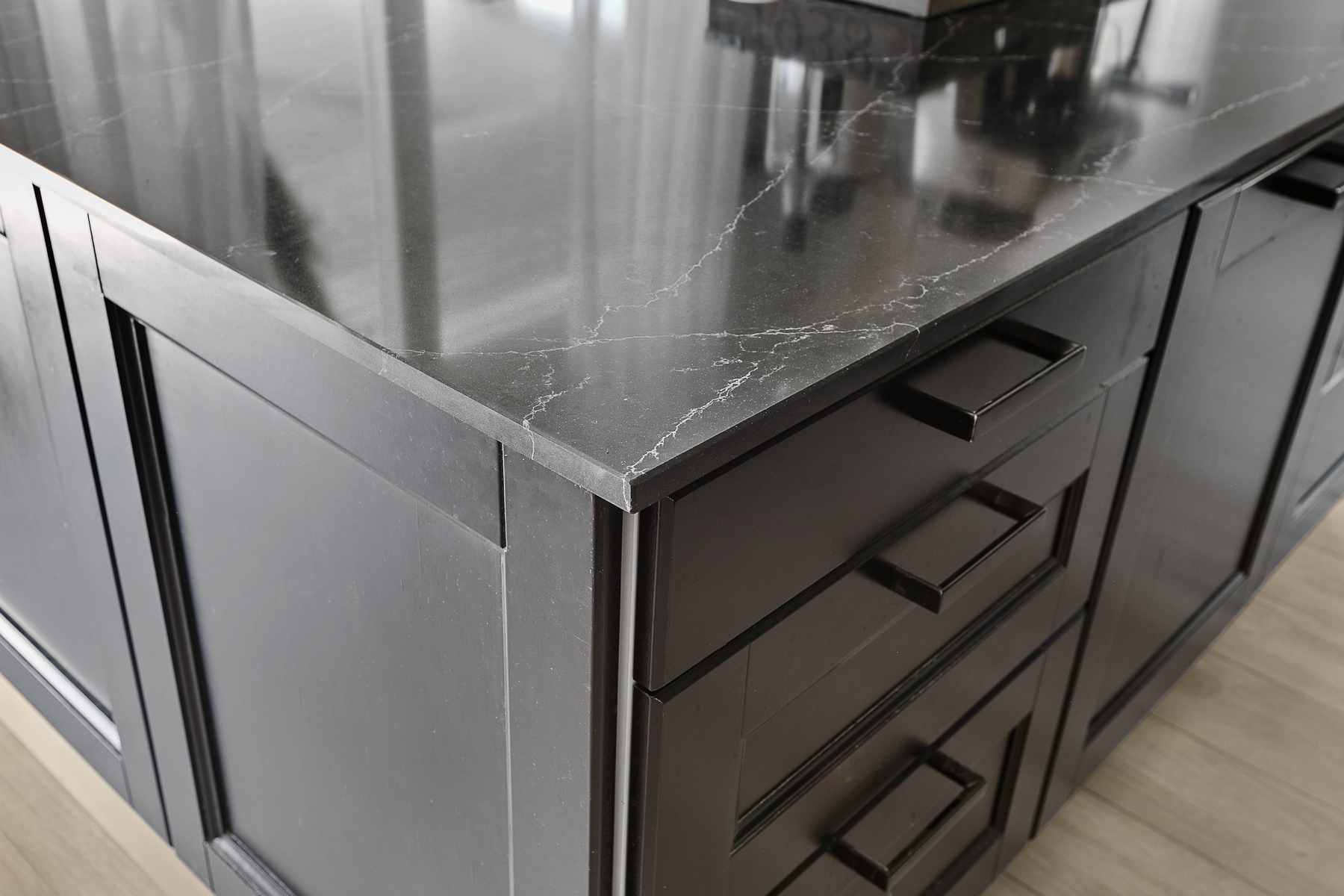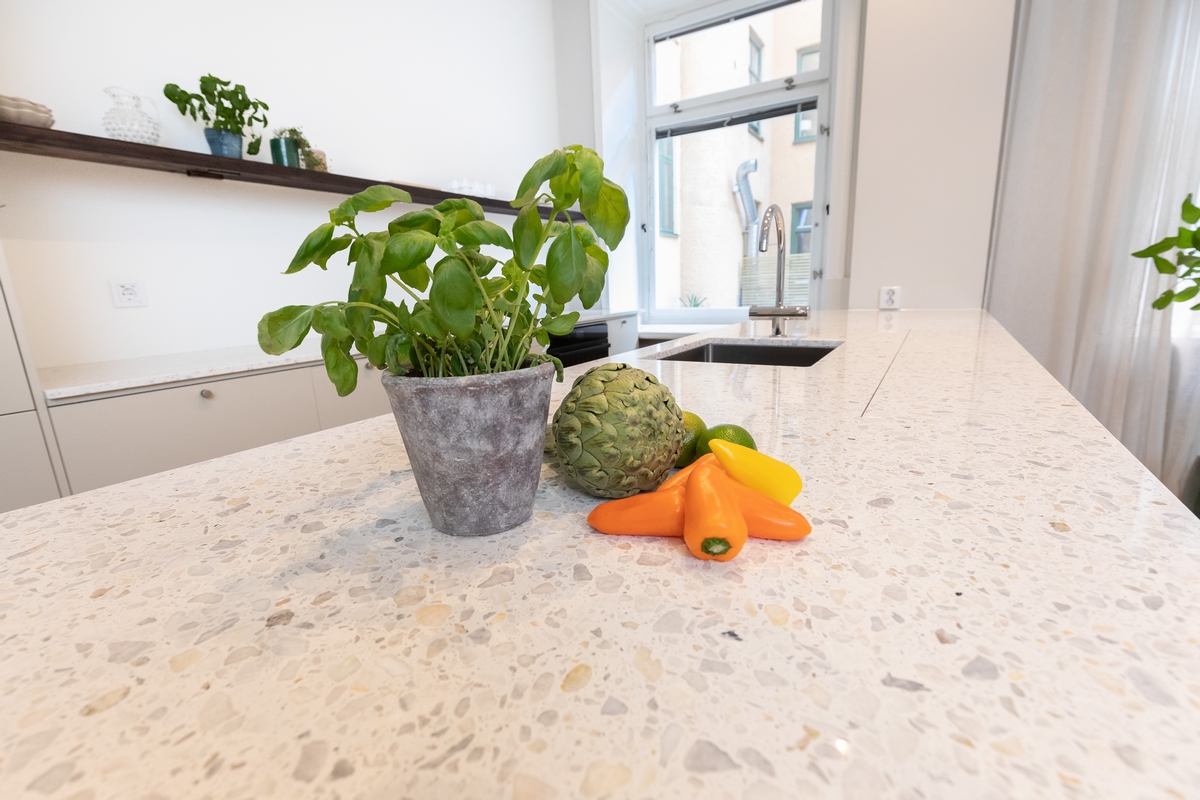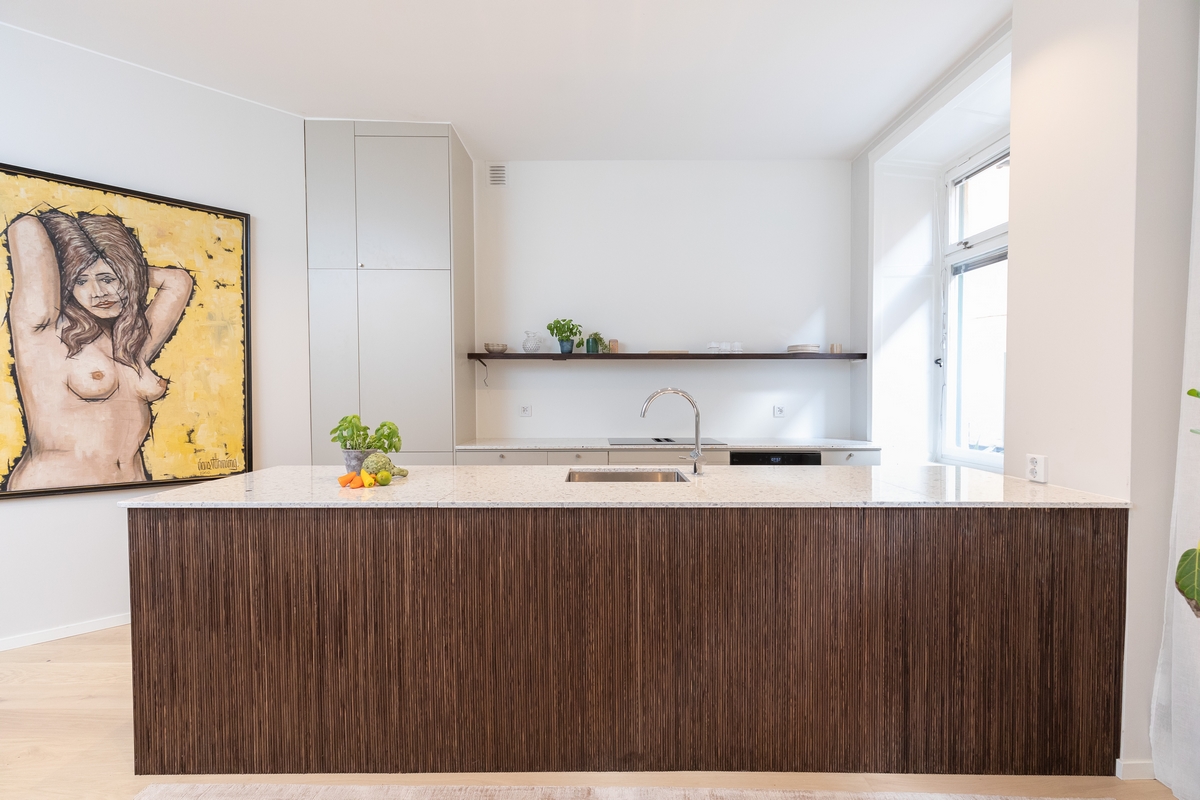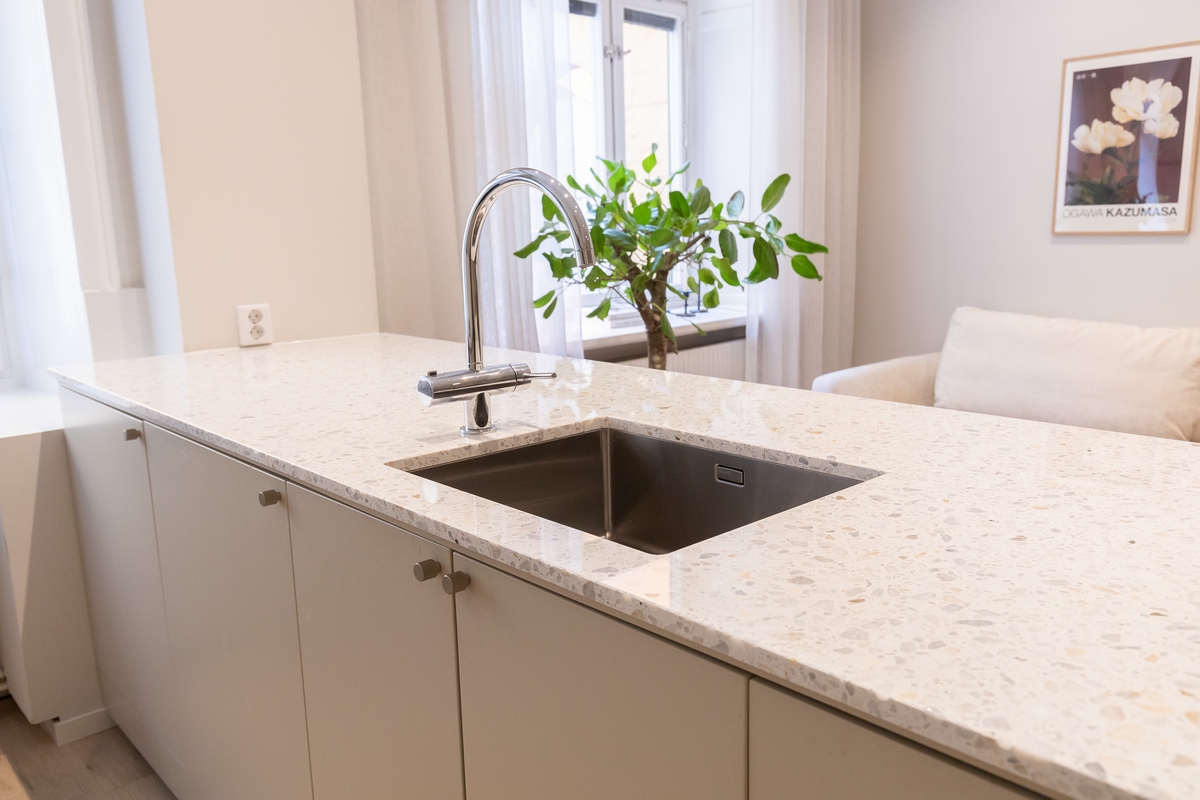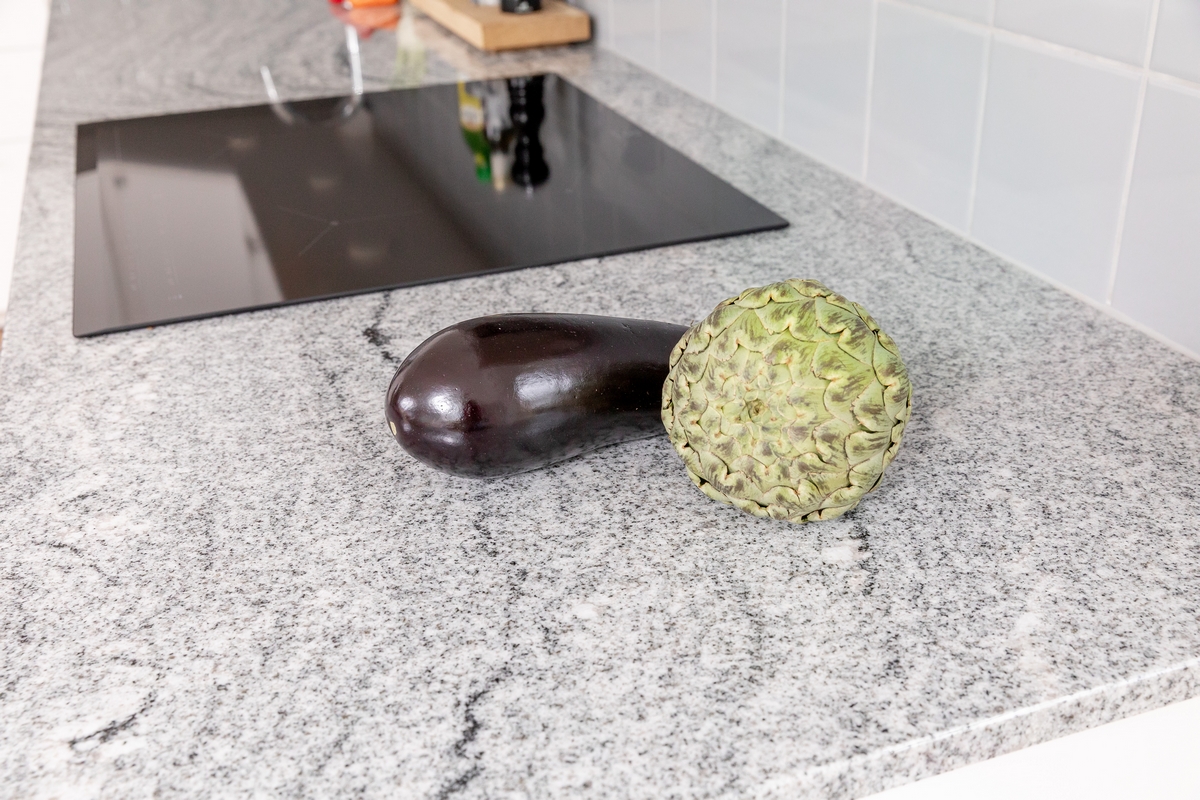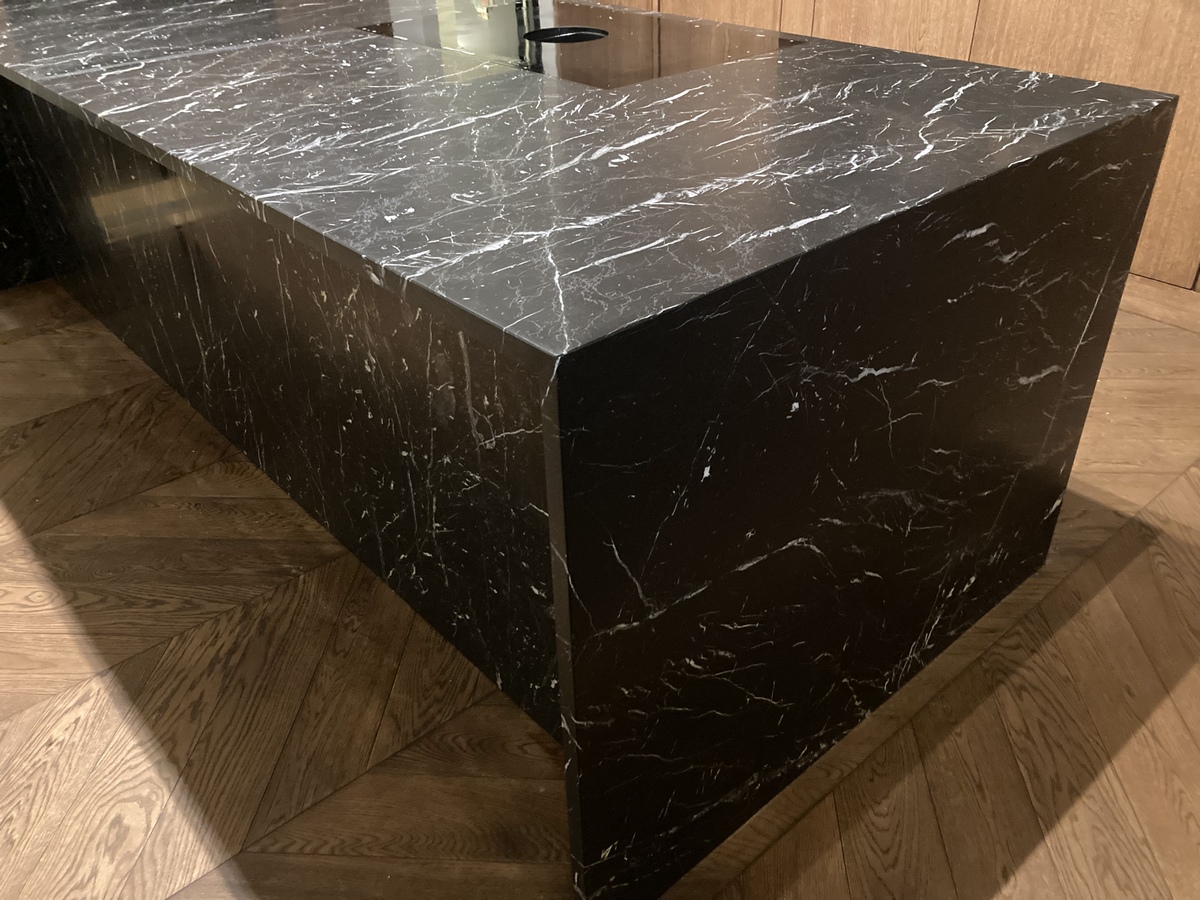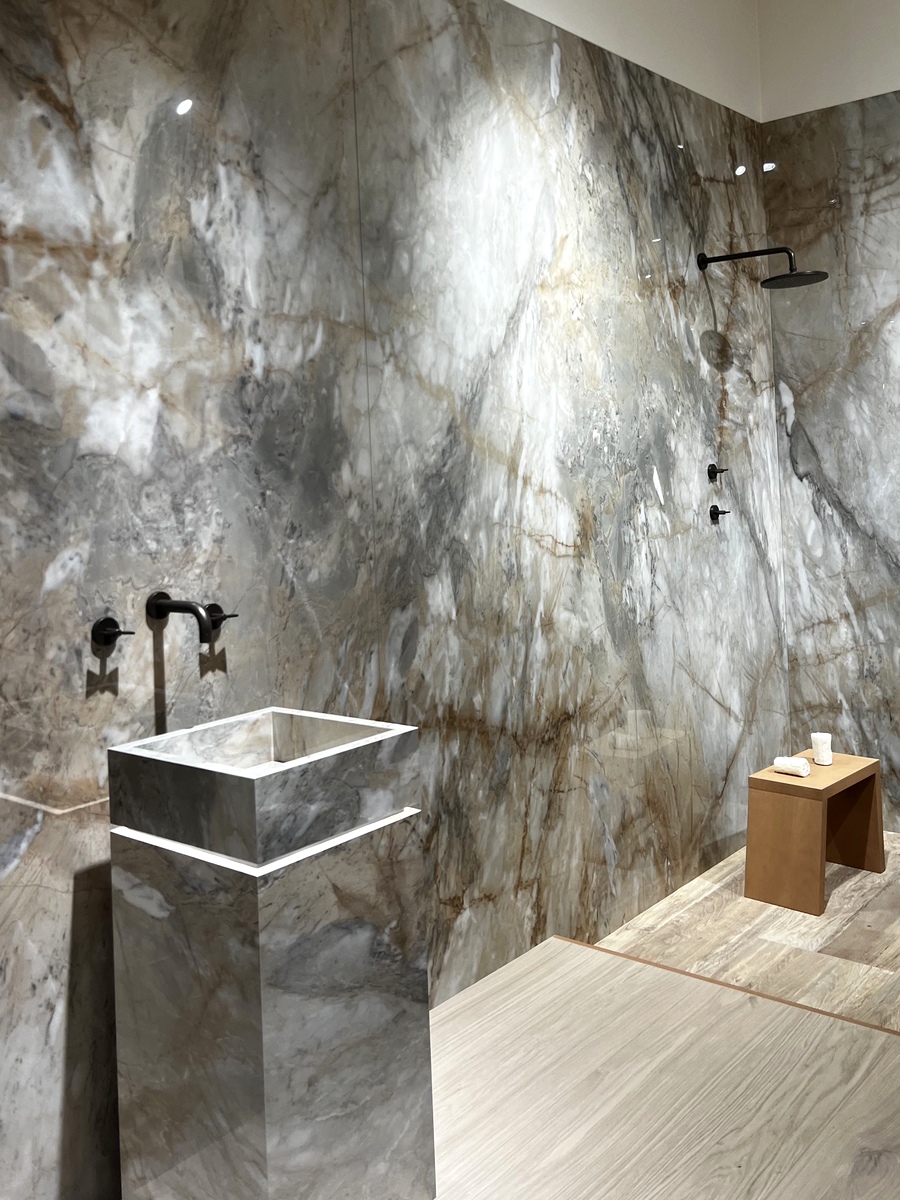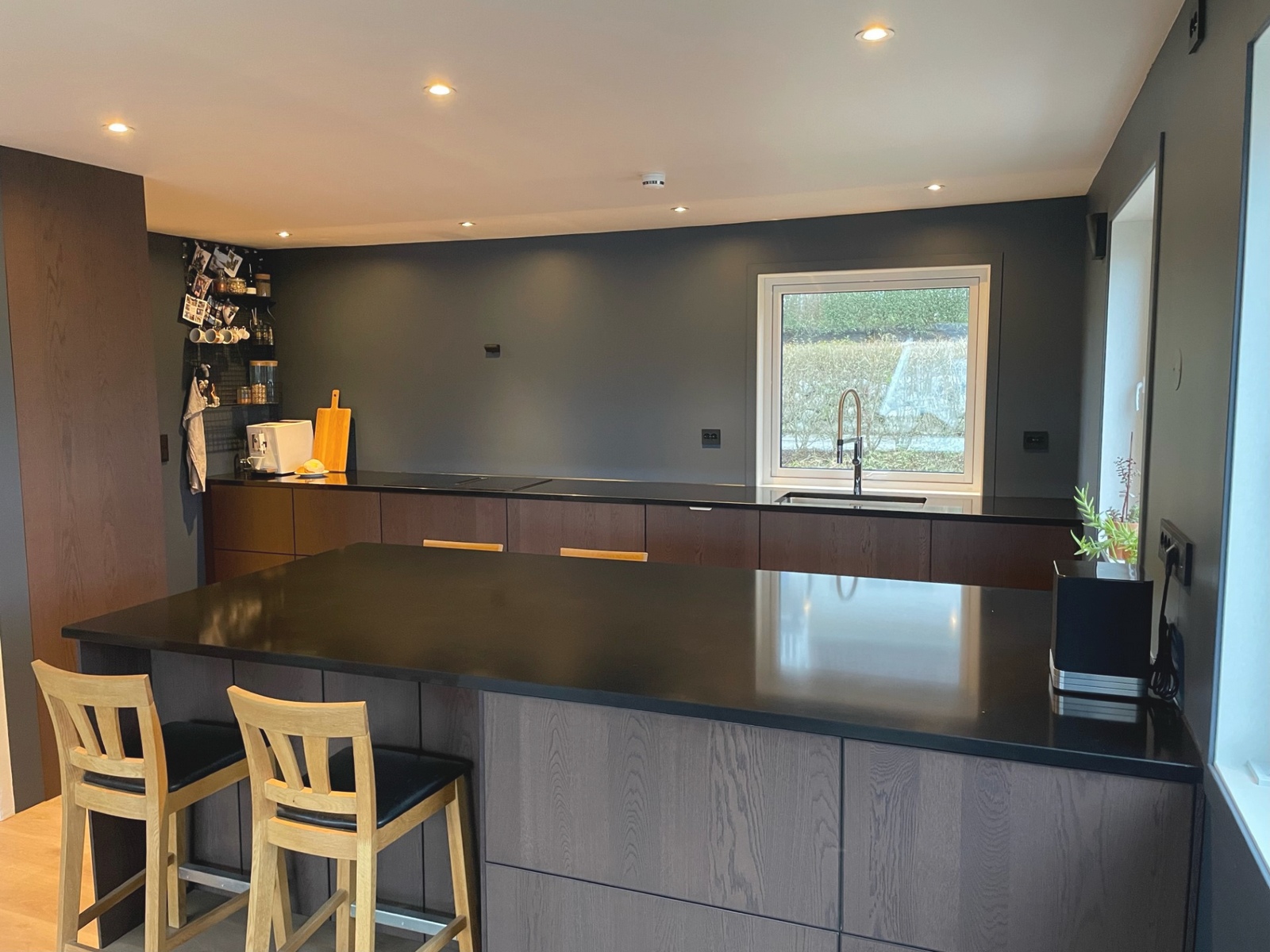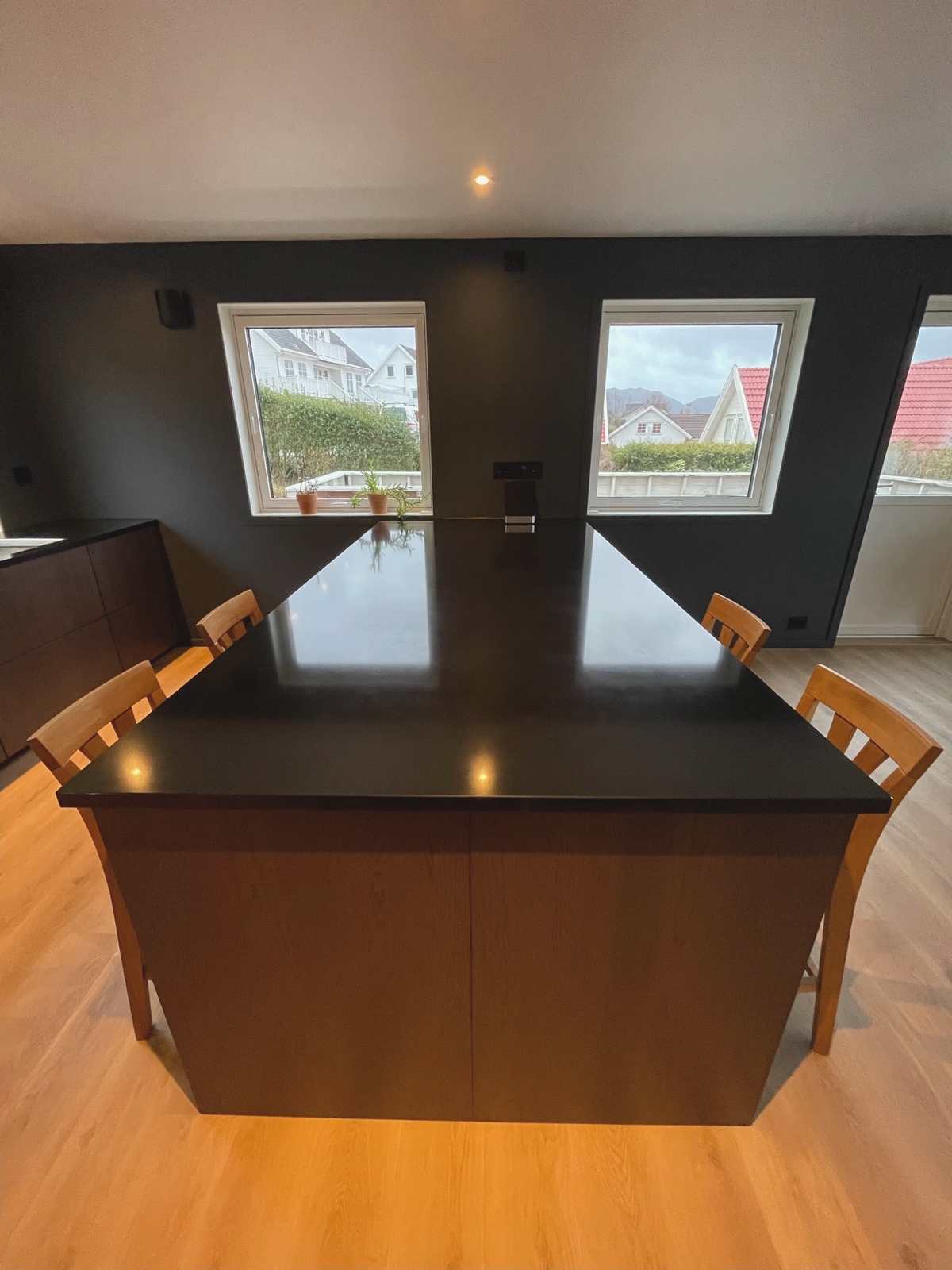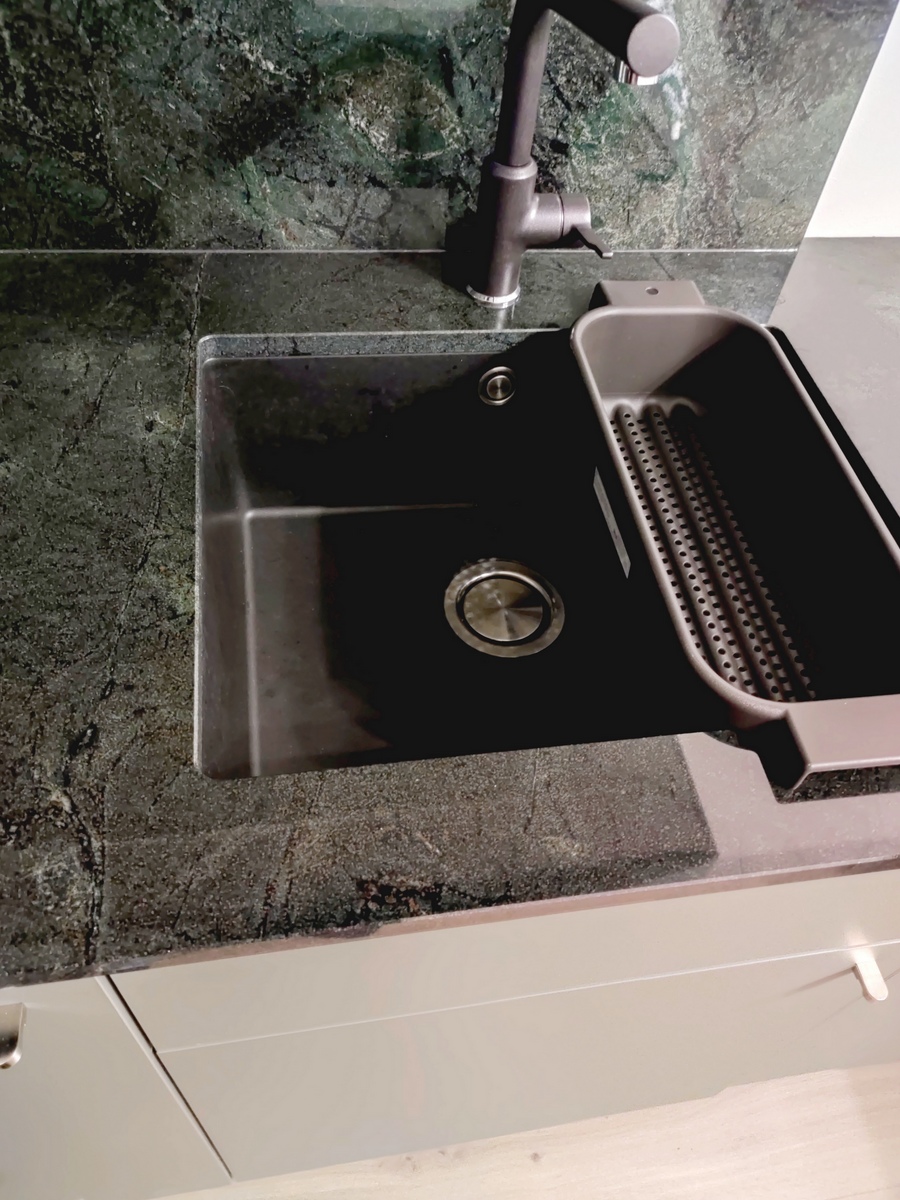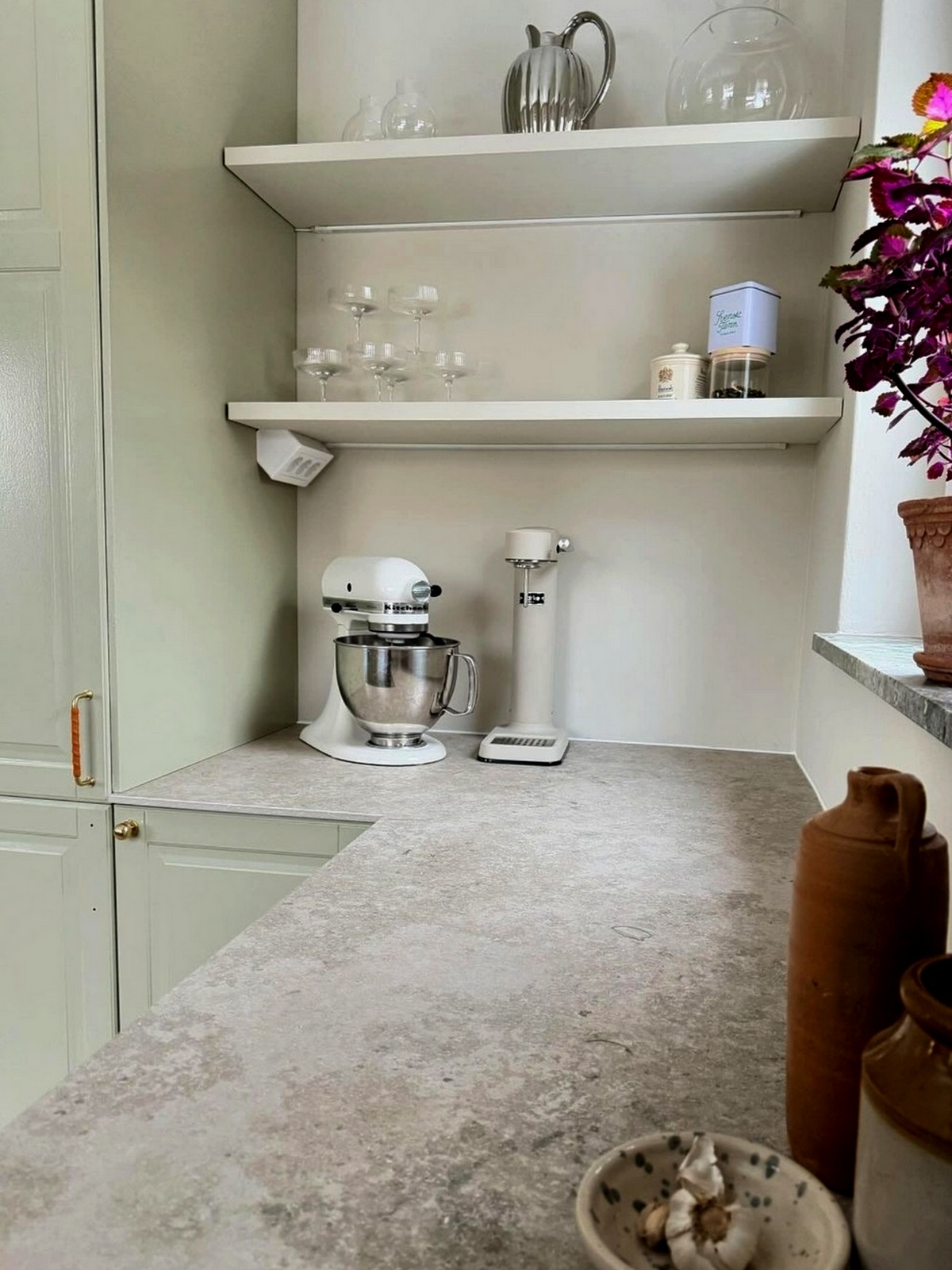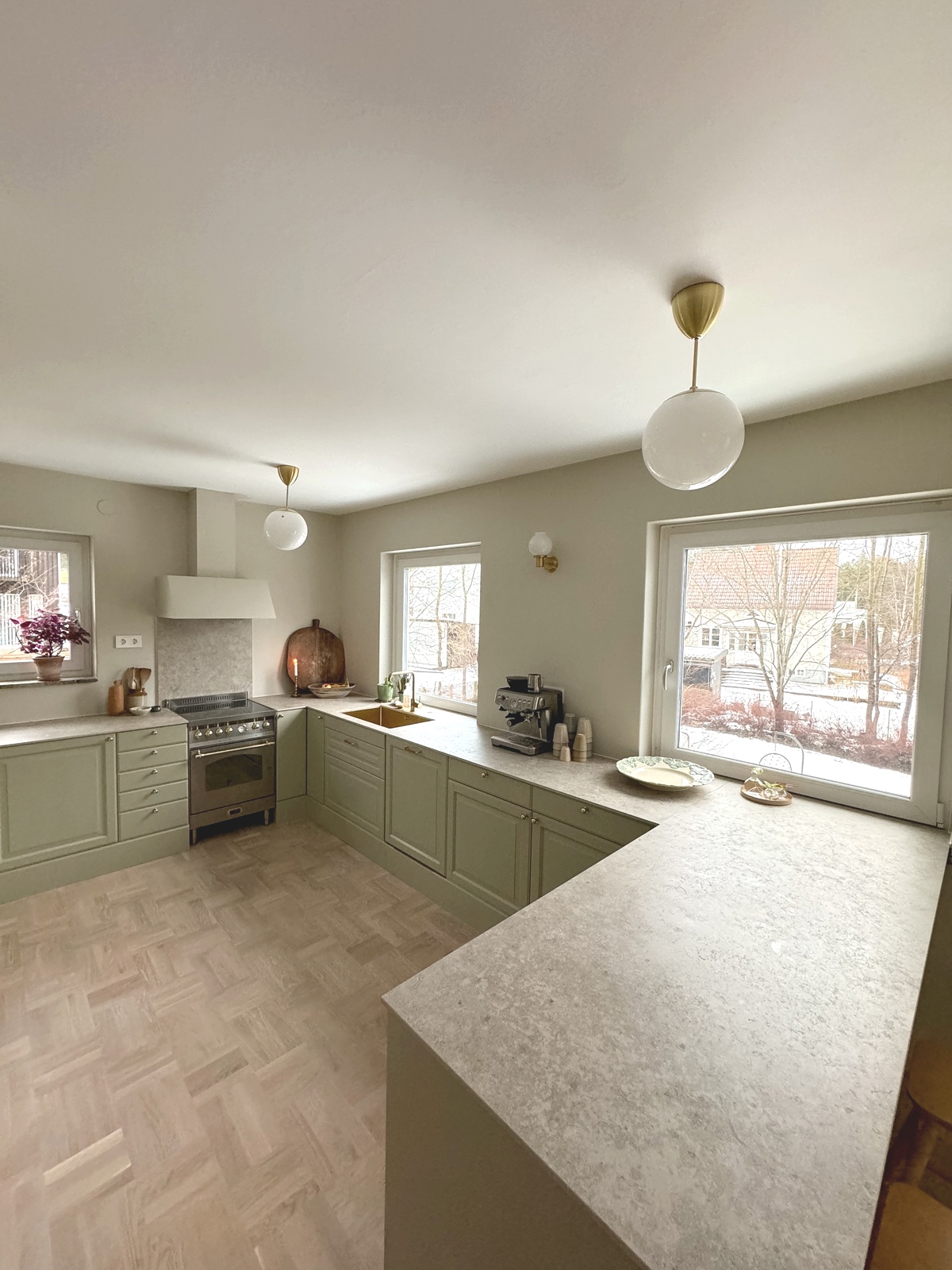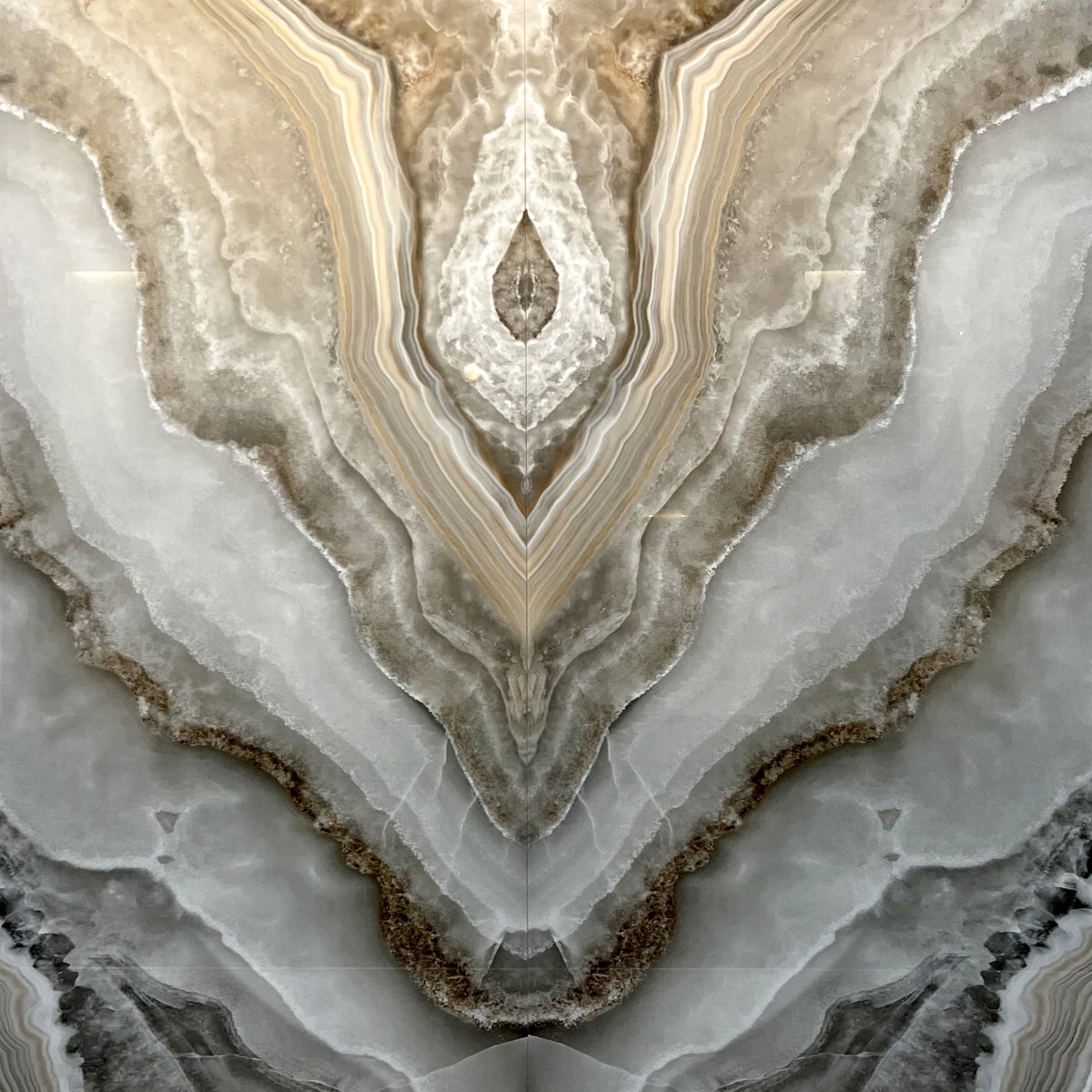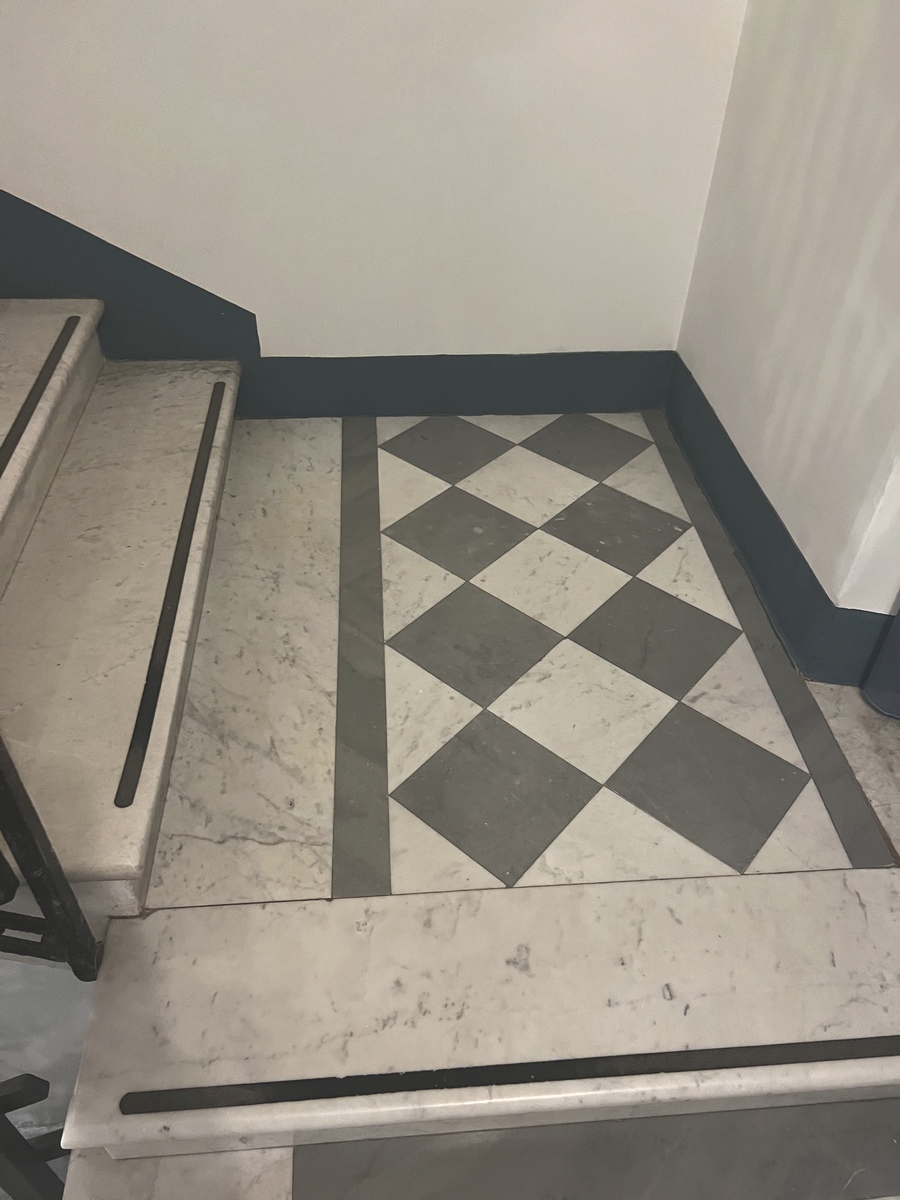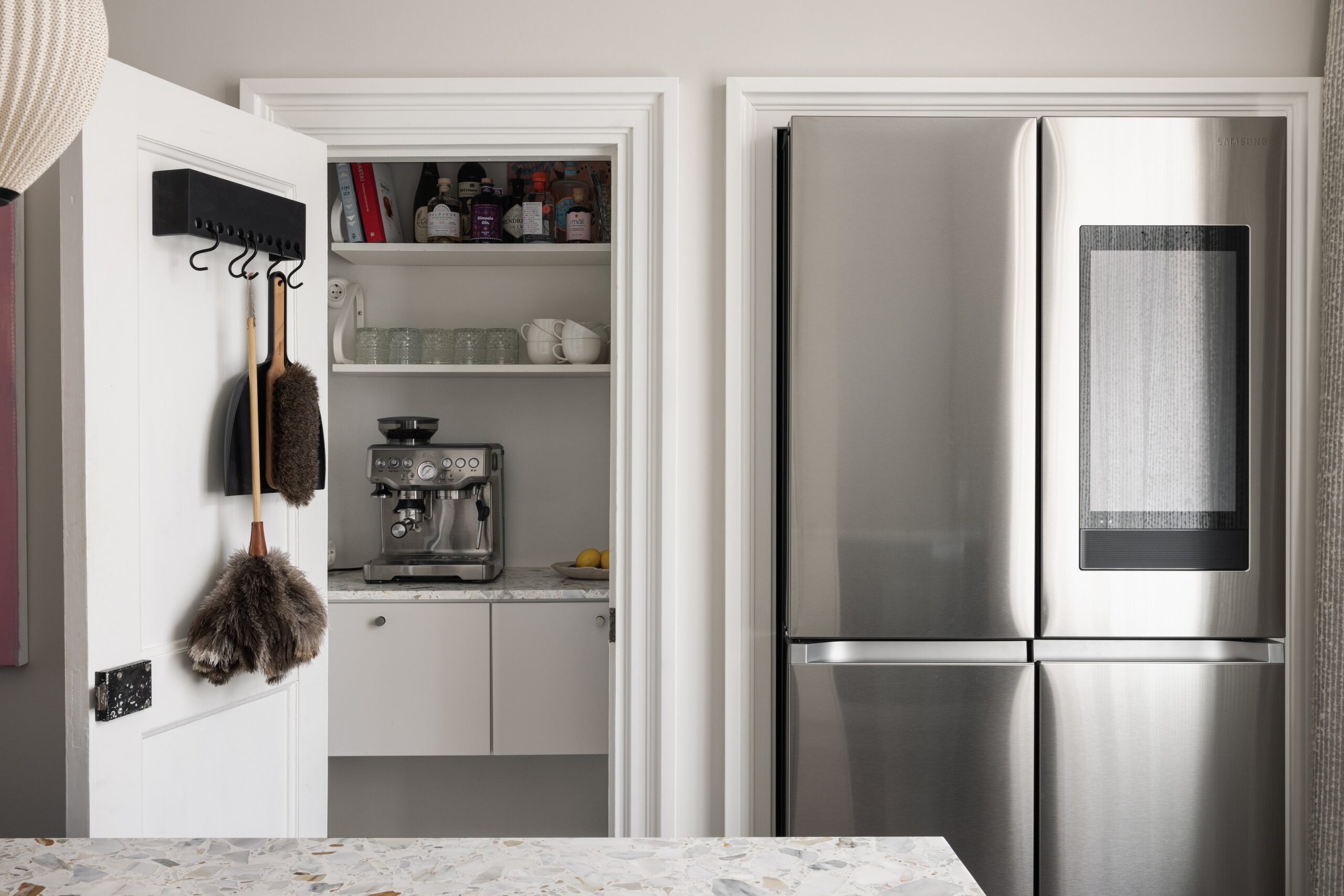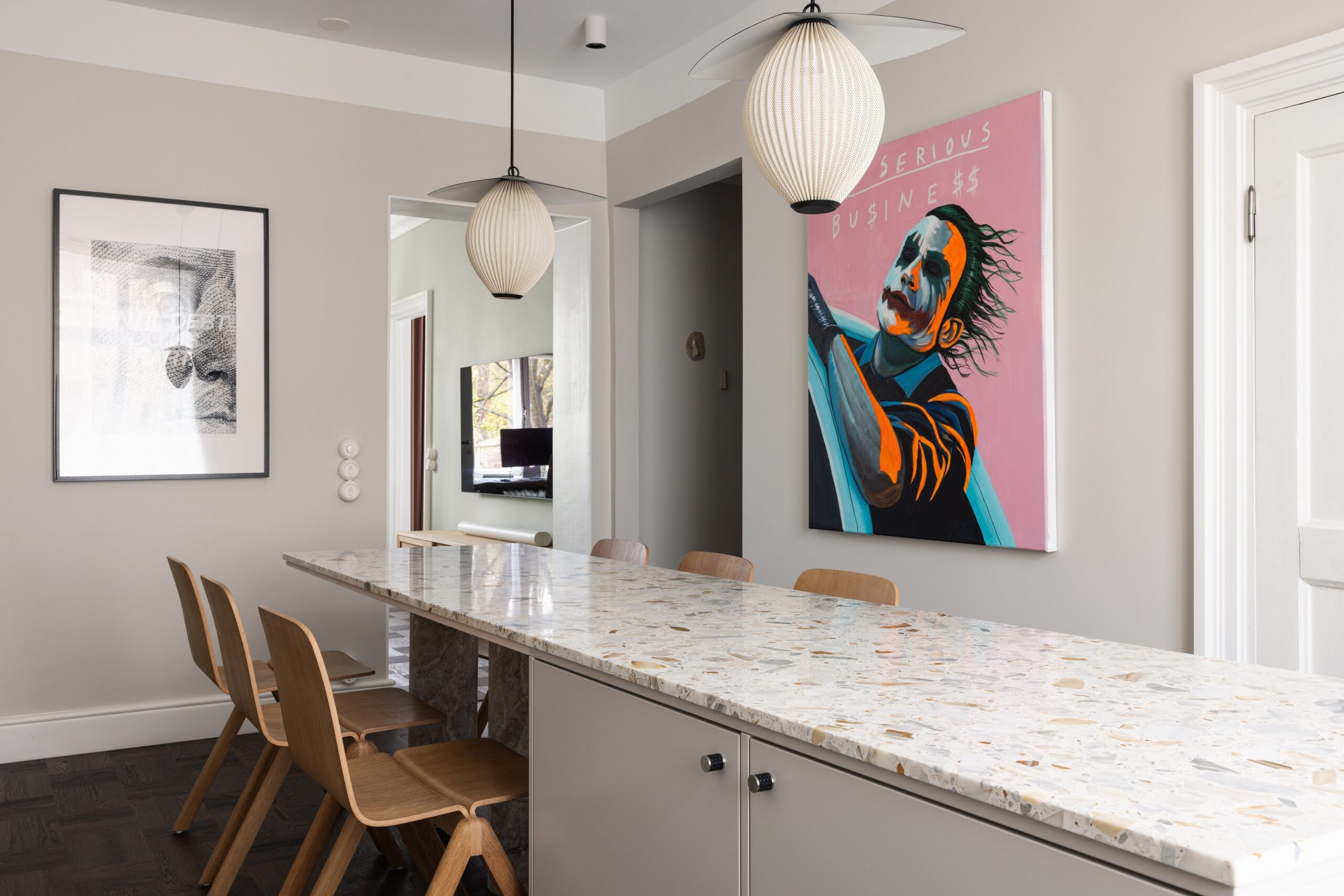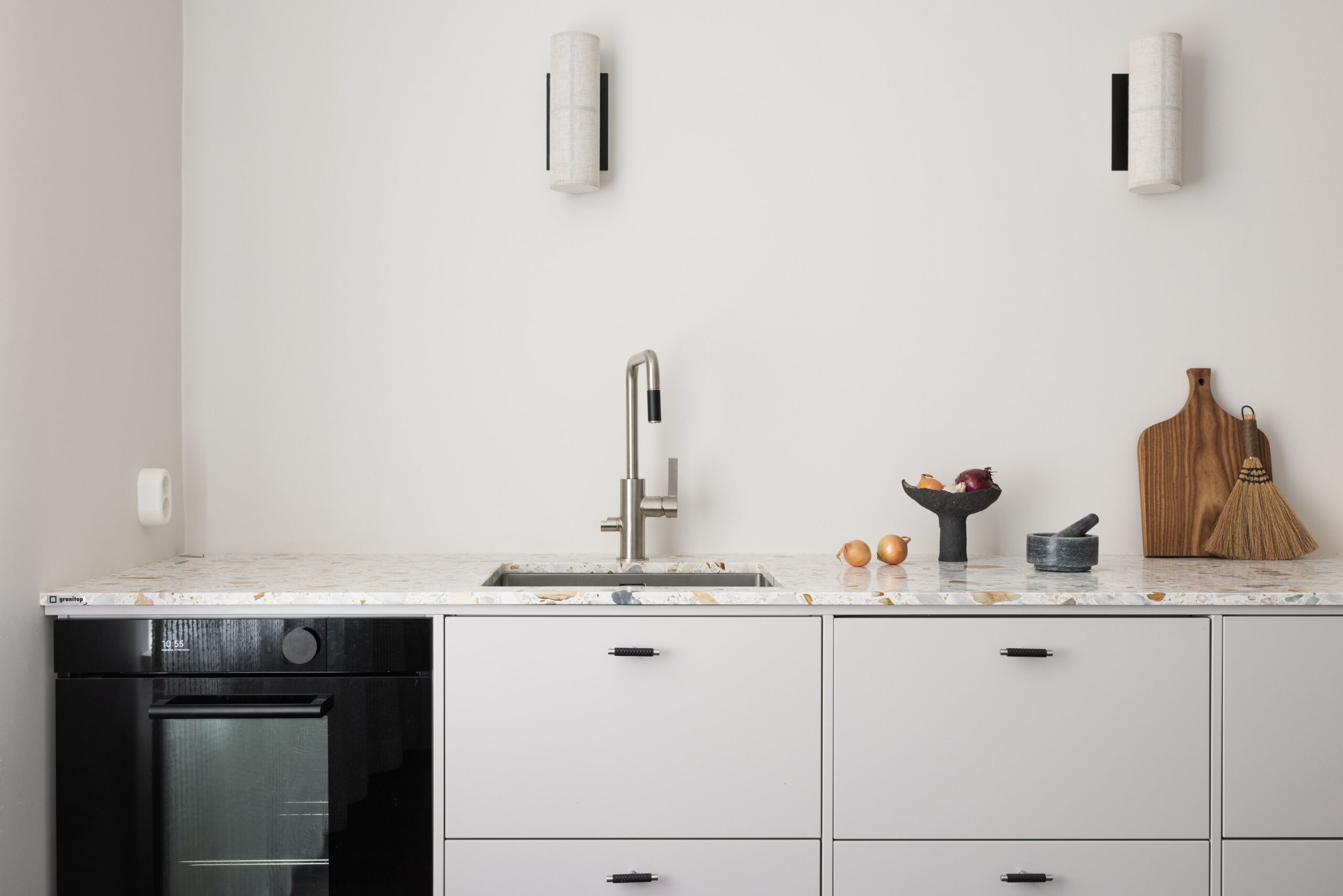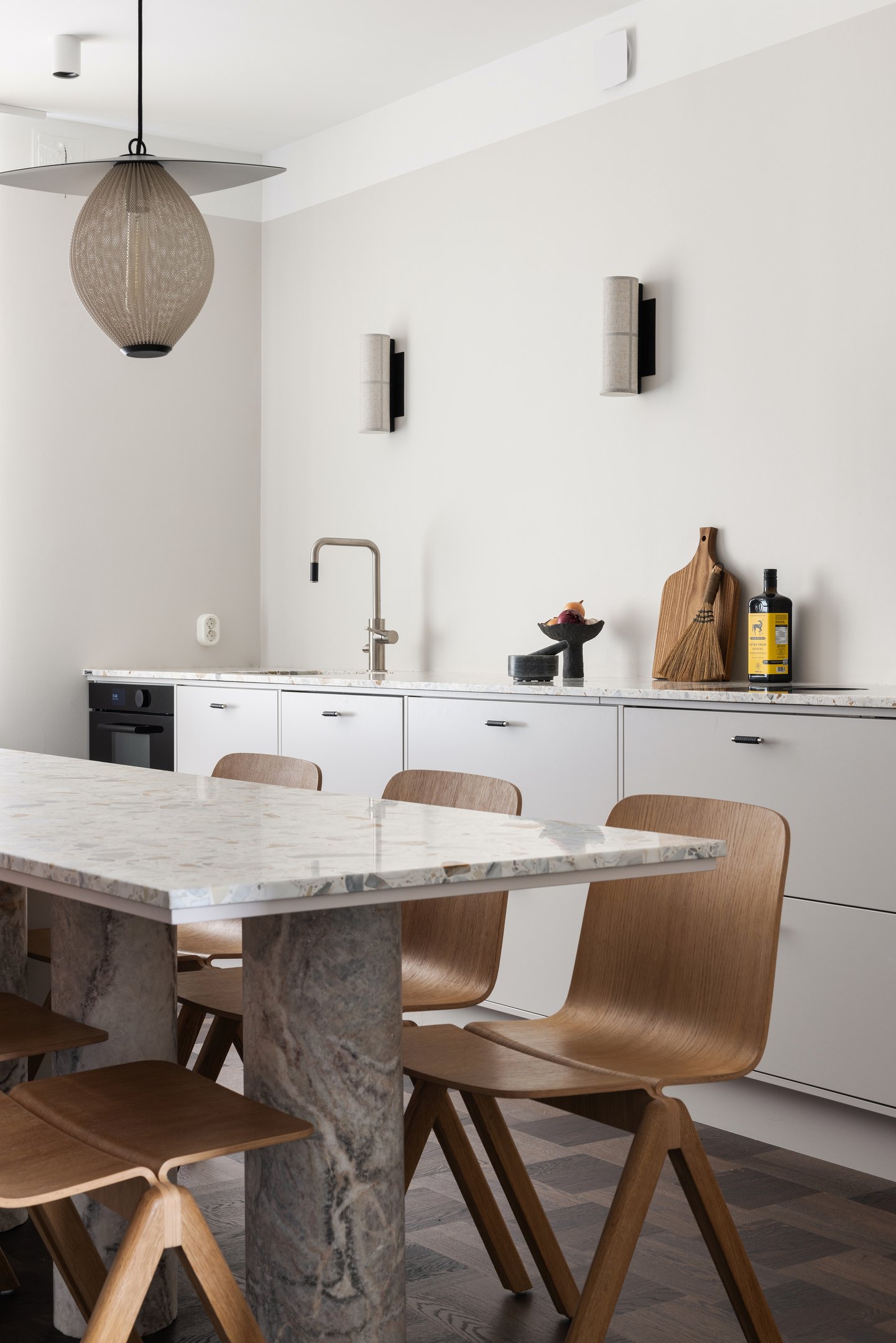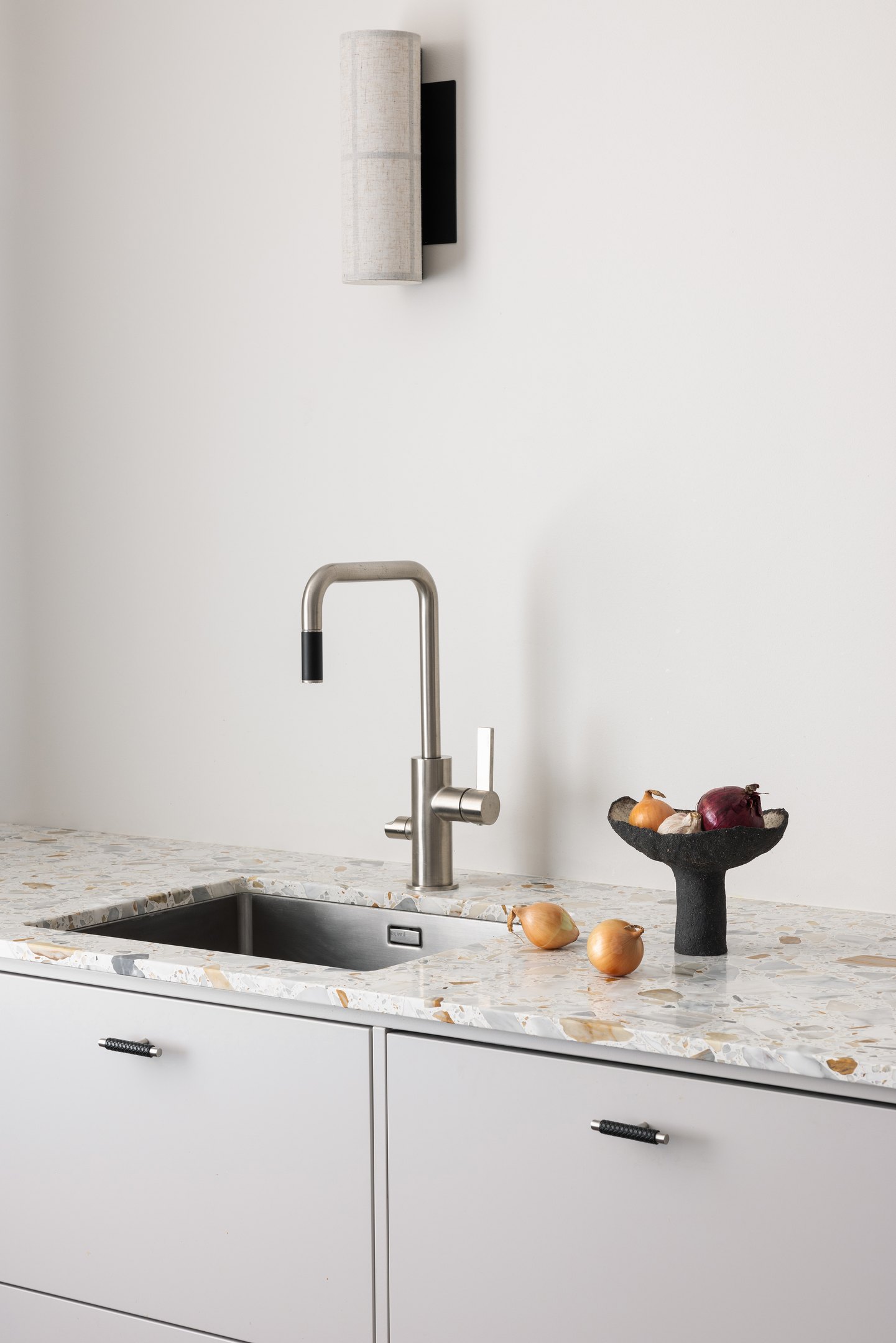
Trend forecasts for 2024
The National Kitchen & Bath Association (NKBA), one of the world’s leading organisations representing professionals in the kitchen and bathroom furniture industry, organised a roundtable in early 2024 to discuss the visions of the top professionals in the industry for the year ahead. In an in-depth report by the Association, which has a 60-year history, hundreds and thousands of furniture manufacturers, designers and retailers found that it is increasingly difficult every year to generalise or predict clear design trends. The main demand from home designers is said to be an individualistic approach. They are looking for the comforts of an epicurean lifestyle and recreational spaces that help them enjoy life to the fullest. They want personalised solutions, not cookie-cutter mass production. Instead of specific styles, materials and colours, emphasis seems to be on world views and sometimes even contradictory keywords. Uniqueness is valued and spaces are increasingly reflecting the face of the homeowner.
Noble Arco
In particular, the following themes emerged from the survey:
- Transitioning from indoor to outdoor space, avoiding borders between room/kitchen and nature.
- Innovation and personalised design.
- Minimalism and materials that are easy to maintain.
- The kitchen island as the focal point of the room.
- The kitchen as a place for well-being and relaxation, not just eating.
- Greater focus on sustainability.
- Appropriate and thoughtful lighting solutions.
Planet Pluto
Additional keywords or talking points mentioned were:
- Popular and original designs.
- Innovative technical solutions.
- Best practices and opportunities for sustainability.
- Kitchen planning divided into 12 steps: kitchen island, storage/cabinets/drawers, worktops, backsplash, floors, fridges, dishwasher, dishes/kitchen appliances, ventilation/hoods, sinks, mixers, and lighting.
Terrazzo Carrara
Granite, marble, limestone and other natural stones are favourites among the eco-conscious
A speaker representing The Natural Stone Institute highlighted that greater use of materials that require minimal processing (such as natural stone) will help keep greenhouse gas levels down. The increasing popularity of granite, marble and limestone is therefore welcome in terms of controlling the carbon footprint and preventing climate change.
Line Møller Mærsk, representative of Lundhs Real Stone in Larvik, Norway, the largest granite producer in the Nordic countries, pointed out that larvikite or blue granite has many faces and because of the many variations of the stone (Blue Pearl, Emerald Pearl, Labrador Antique etc), the material can be used in a wide range of colour schemes. Each of these granite varieties is interesting and distinctive, and their properties help to create personalised spaces and solutions.
Granite is visually attractive and at the same time reflects the calm of being close to nature. The bluish-grey layered stone with its interplay of light is particularly lovely in environments associated with water, such as spas and steam saunas, and as a worktop or a backsplash behind a sink. As granite is also relatively strong and has a low water absorption coefficient, it is perfect for areas where more porous natural stones (such as limestone and marble) are not practical.
| Look for sinks! |
Viscount White
“Our company’s zero-waste policy and EPD (Environmental Product Declaration) show that we support and encourage a sustainable way of thinking,” said Møller Mærsk. “We are also working with architects, designers and builders to continue to look for creative ways to make the most of all the stone from granite quarrying, including surplus production.”
The rising trend in the use of natural materials, including marble and light woods (oak in particular), was also noticed by many other top interior design professionals. In the case of marble, it was noted that it is now popular to cover the sides of kitchen islands with stone, making it look like a giant stone block.
This approach had been noted by as many as 56% of respondents, with no exceptions as to the colour of marble for kitchen islands, which have grown in size – people are equally fond of white, black, green and other colours (yellow, brown, pink).
As customers are on the lookout for unique designs, we have seen a rise in the popularity of custom-ordered materials at Granitop. There is no way to include every type of stone in the world in our product range, but we can offer exclusive materials and solutions should our customers ask for it.
| Look for possibilities! |
Kitchen island and handy storage
“A kitchen island is the focal point of the room and an opportunity to create a work of art using unique stone and contrasting colours or materials. I see the kitchen island evolving, playing with transitions in form and materials to not just be a work area but more like a fine piece of furniture,” said one designer. “We have also seen some very interesting changes in the design of kitchen islands in terms of seating arrangements with a shift away from the traditional layout. Formerly dominating wrap-around or all in a row seating arrangements are a thing of the past.”
Crystal Vulcano
61% of those surveyed felt it was important to have a full-height backsplash complementing the worktop. “On one hand, it looks luxurious, but on the other hand, it makes for easier cleaning.”
50% accented the importance of carefully planning the size and layout of drawers and cupboards. 37% would like it to be easier to divide the space inside the furniture based on custom needs. The importance of drawer inserts, waste systems for sorting waste, and chopping boards and colanders that fit the sink were also mentioned.
“More floor-to-ceiling furniture and deep lower cabinets to help maximise storage space, more drawers and built-in loading stations to improve the functionality of kitchen furniture.”
The increasing popularity of the bar area could be highlighted as a microtrend, with nearly 60% of respondents stating that there should be an area in the kitchen, perhaps even with a separate small fridge, to freshen up. This area could incorporate coffee machines, bar cabinets as well as appliances for making smoothies and cocktails.
Ceramics and quartz are still popular as materials requiring the least maintenance
73% of respondents voted for artificial stone as the material of the future. Here in Granitop we can also confirm that ceramic worktops, especially with a limestone-like design (like Bricmate´s stones), are becoming increasingly popular.
Quartz and ceramic worktops are easy to clean and incredibly stain resistant. Moreover, ceramic worktops are heat resistant and lighter in weight than solid natural stone. Cleanliness, along with convenience, is one of the many reasons why people love quartz and ceramics.
“Artificial stone offers the same beauty and luxury in kitchens and bathrooms as natural stone, but you get a beautiful result with much less effort.”
Jura Select Classic
Quiet luxury was mentioned when talking about modern technology. When it comes to choosing ventilation hoods and dishwashers, noise levels are seen as increasingly important, with as many as 65% preferring quieter models and 41% stressing the importance of the silent closure of cupboard drawers and waste systems.
For a while, stainless steel seemed to be retreating from kitchen appliances and white and matt black appliances were gaining in popularity, but silver-grey metallic appliances are now back in fashion. This is particularly true for ventilation hoods, which were previously likely to be hidden away into cabinets. The current dominant view is that the hood should be large and prominent, powerful but quiet, and 51% of respondents think it should be made of stainless steel.
Nature conservation and responsible consumption
Fifty-one per cent of respondents felt that nature conservation is here to stay – decisions motivated by a sustainable mindset also apply to home renovation. For this reason, manufacturers and industry professionals have undertaken to guide customers towards more responsible consumption.
“The mission is to promote product quality and longevity as well as energy-efficient and reusable solutions. For example, 52.5% of kitchen furniture and fittings can currently be reused and 23% are compostable.”
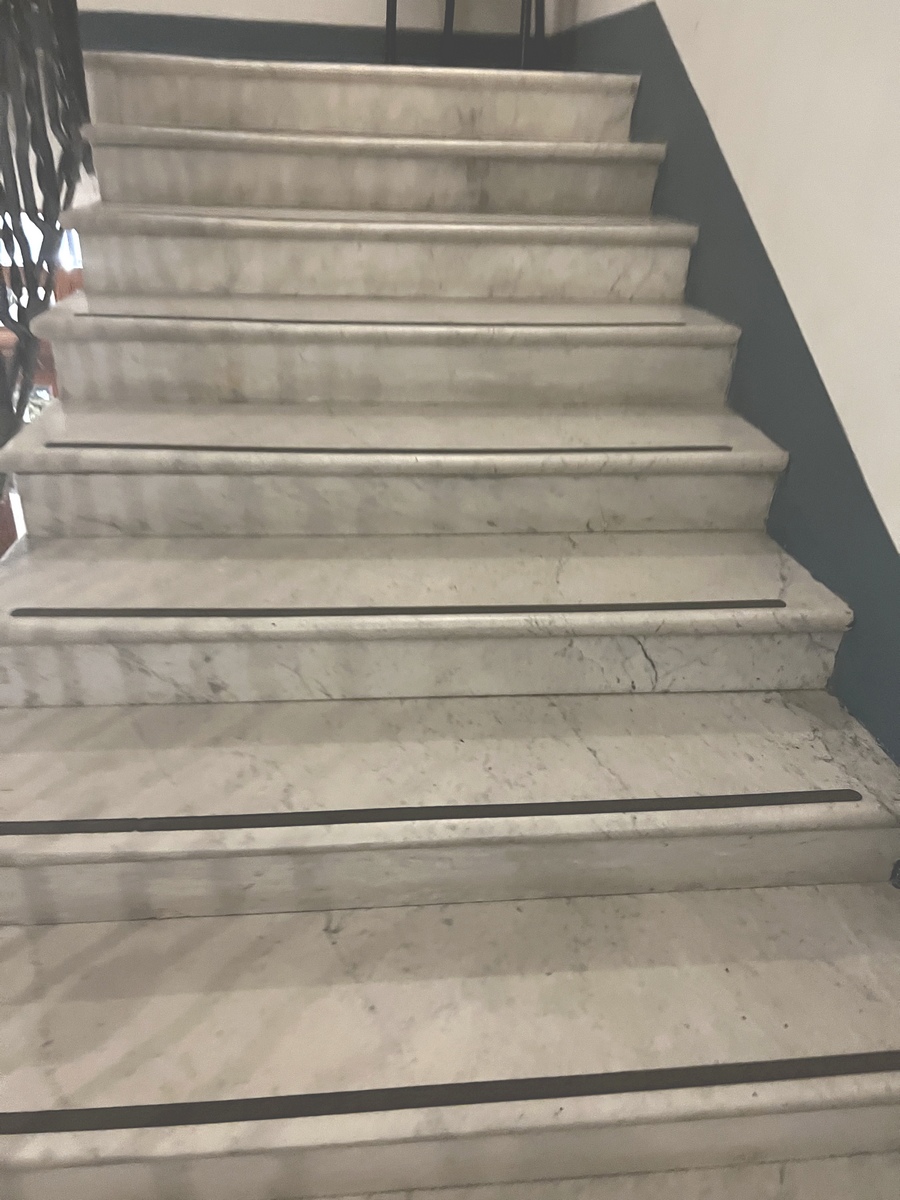
The eco-friendliness of the production process is carefully monitored in the case of stone worktops, and the reuse rate for stone is close to 100%. Over the years, Granitop has also invested in a water treatment system and energy-efficient equipment. We use heat recovery ventilation in the factory and have stepped up our use of renewable energy (an autonomous power generation system based on solar panels is under construction).
Make a sustainable decision by choosing a stone worktop that will last for decades!
If you wish to find out how much would a worktop perfectly fitted for Your kitchen cost, try out our price calculator with which You’ll get an estimate on the costs of product and installation both. If You have any questions, contact our professionals who are happy to help You!
A selection of trendy exotic stones in 2024


